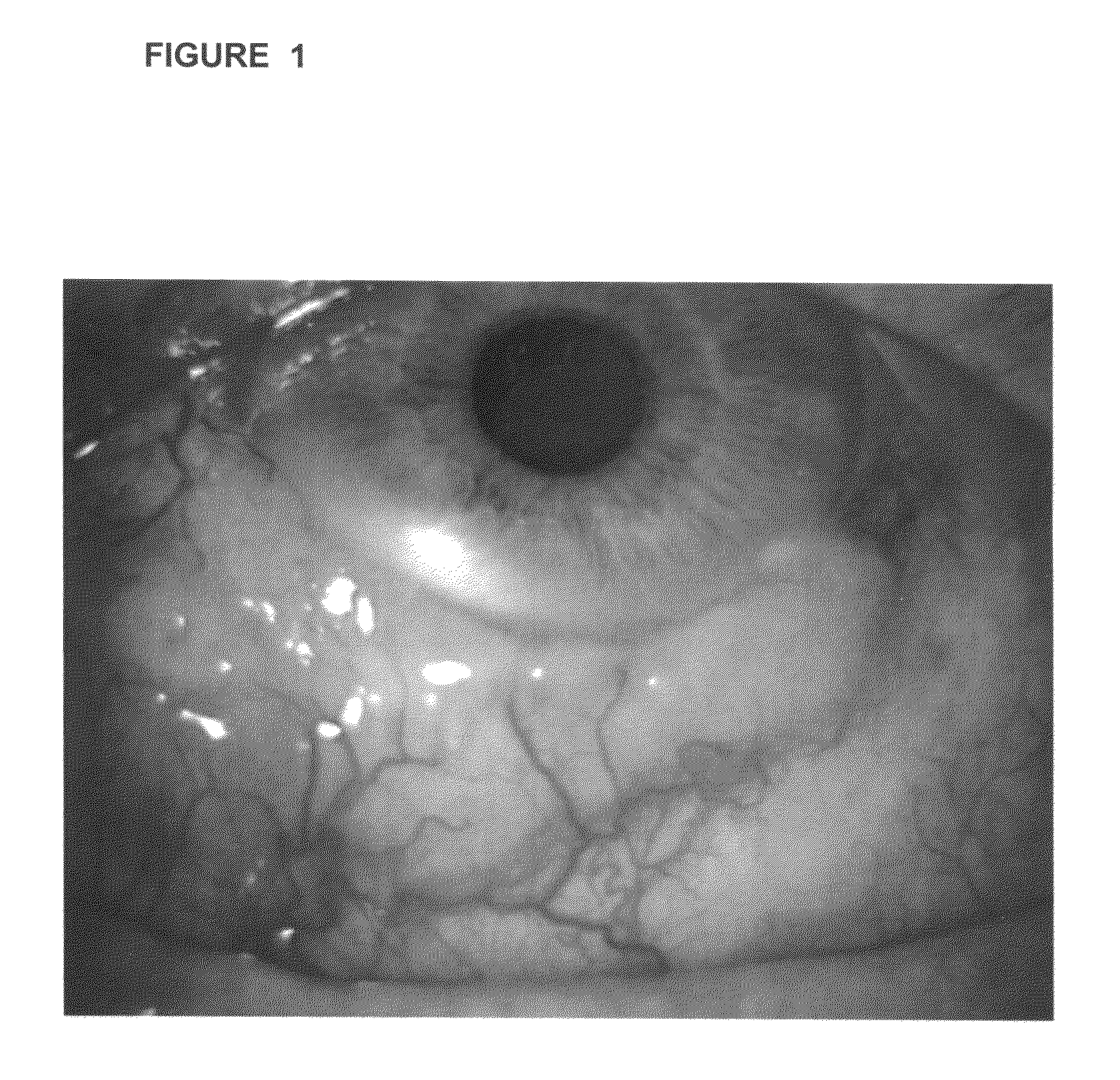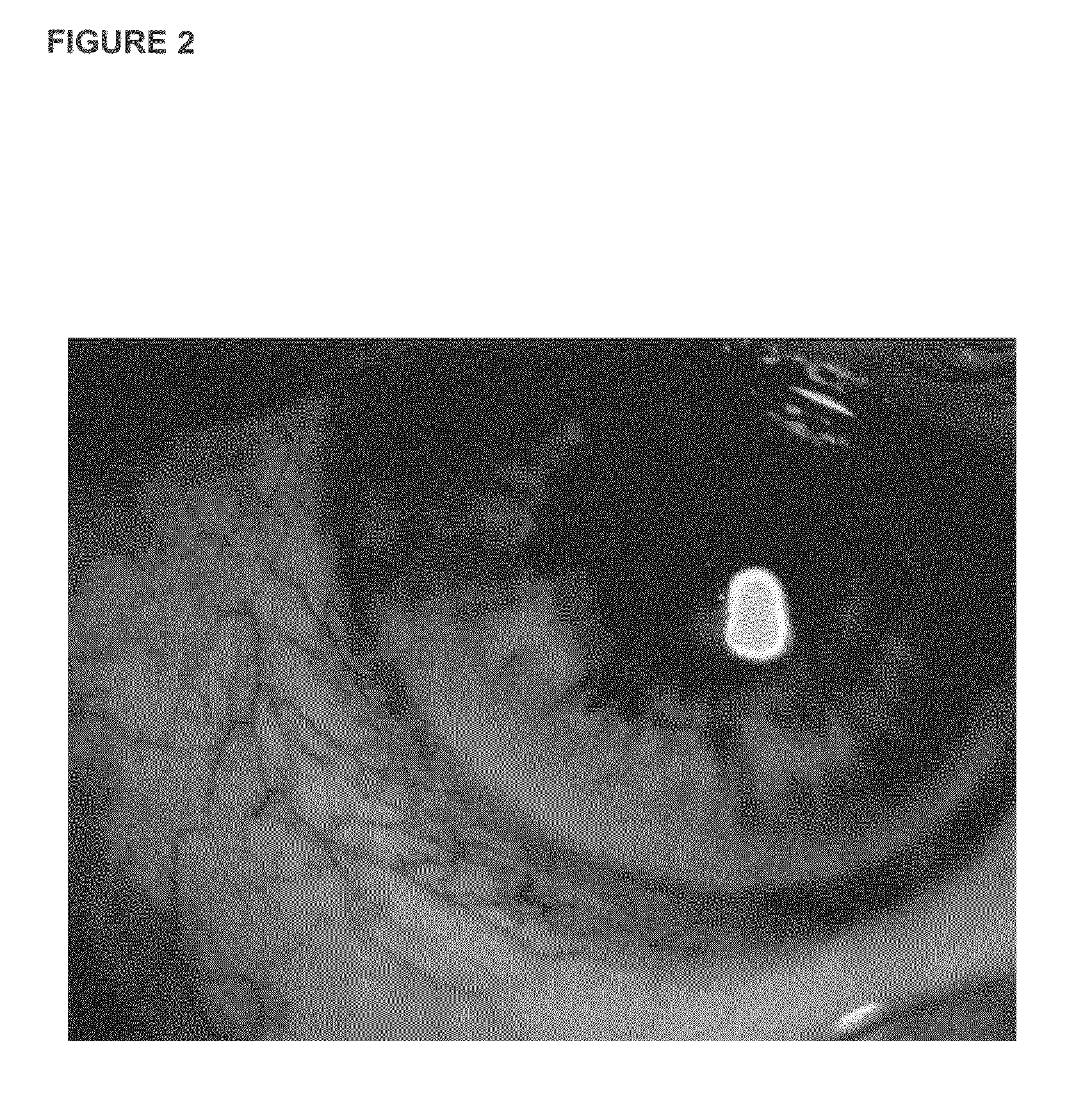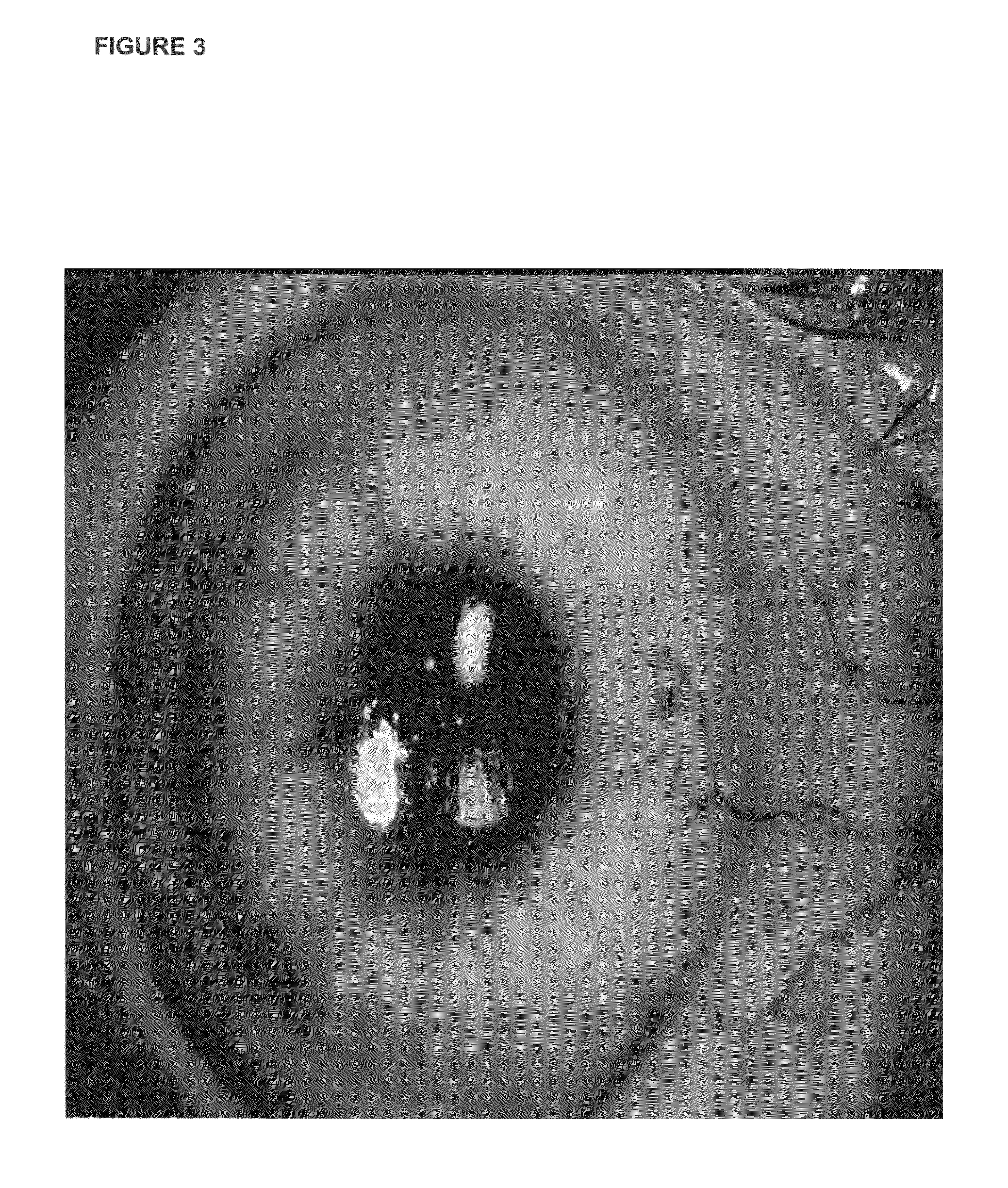Treatment of ocular lesions
a treatment and ocular technology, applied in the field of ocular lesions, can solve the problems of topical antipoliferatives used in the eye, ocular cornea warpage, and ocular axis obscure, and achieve the effect of preventing recurrence of lesions
- Summary
- Abstract
- Description
- Claims
- Application Information
AI Technical Summary
Benefits of technology
Problems solved by technology
Method used
Image
Examples
example 1
[0047]Mr KB, a 56 year old retired farmer, noted a mass located a the right inferior limbus 12 months prior to presentation. Biopsy revealed a very large squamous cell carcinoma, clinically extending for 180 degrees of the inferior limbus (FIG. 1).
[0048]Mr KB was commenced on interferon α-2b 1 million IU qid, retinoic acid 0.01% 2nd daily. He was also treated with intralesional interferon α 3 million IU in 0.5 ml normal saline twice weekly (total 4 injections in 2 weeks) and underwent surgical excision with a limbal-conjunctival graft 6 weeks after treatment commenced. The lesion pathology demonstrated extensive necrosis. There was no evidence of recurrence at 12 month follow up (FIG. 2).
example 2
[0049]Ms BC had a 5 year history of diminishing vision in her right eye, and presented with a dense right cataract and corneal epithelial dysplasia affecting her superior cornea and contiguous with a right nasal pterygium (FIGS. 3 and 4).
[0050]Cataract surgery as well as biopsy of a right nasal pterygium with contiguous corneal epithelium was performed. Initial biopsy revealed features consistent with a pterygium. The lesion demonstrated primary acquired melanosis with atypia of the pterygium epithelium.
[0051]She was treated with interferon α eyedrops (1 million IU / ml 4 times / day) and retinoic acid eyedrops 0.01% second daily. Three months after combined treatment her vision was stable, corneal epithelial appearance had improved and pterygium has resolved. She was commenced on preservative free serum-based eyedrops and other topical medication ceased. Her vision continued to improved to 6 / 12 unaided. The pterygium had resolved as had the epithelial dysplasia as shown in FIG. 5.
example 3
[0052]Mr KJ presented with a 12 month history of blurred vision in his right eye. The cornea was noted to have reduced sensation and the epithelial surface had broken down on several occasions. Herpetic disease was suspected by a typical dendritic appearance had not been seen. Examination however revealed that the corneal epithelium had a dysplastic appearance. Uncorrected vision in this eye was 6 / 24 which could not be improved by refraction but pinhole vision was 6 / 12. He was commenced on retinoic acid eyedrops 0.01% second daily as well as preservative free serum based eyedrops qid. Six months later there had been no improvement and interferon α eyedrops 1 M IU / ml qid were commenced and retinoic acid drops continued as before. After two months of combined treatment there had been a marked improvement in both is corneal appearance with small patch of epithelium of irregular appearance remaining in the super-temporal aspect of his cornea and vision (now 6 / 12 unaided). He was not abl...
PUM
| Property | Measurement | Unit |
|---|---|---|
| time | aaaaa | aaaaa |
| time | aaaaa | aaaaa |
| time | aaaaa | aaaaa |
Abstract
Description
Claims
Application Information
 Login to View More
Login to View More - R&D
- Intellectual Property
- Life Sciences
- Materials
- Tech Scout
- Unparalleled Data Quality
- Higher Quality Content
- 60% Fewer Hallucinations
Browse by: Latest US Patents, China's latest patents, Technical Efficacy Thesaurus, Application Domain, Technology Topic, Popular Technical Reports.
© 2025 PatSnap. All rights reserved.Legal|Privacy policy|Modern Slavery Act Transparency Statement|Sitemap|About US| Contact US: help@patsnap.com



